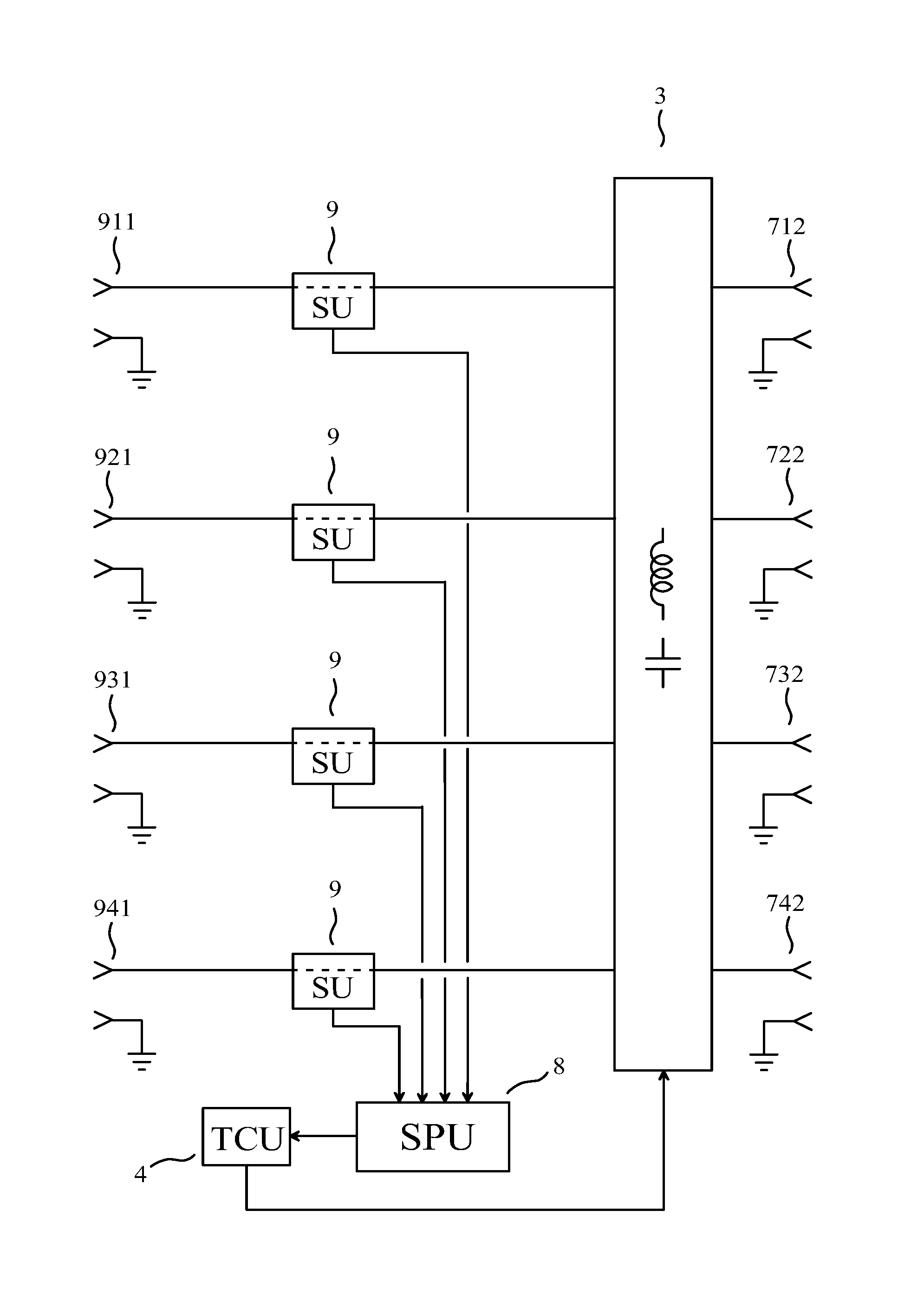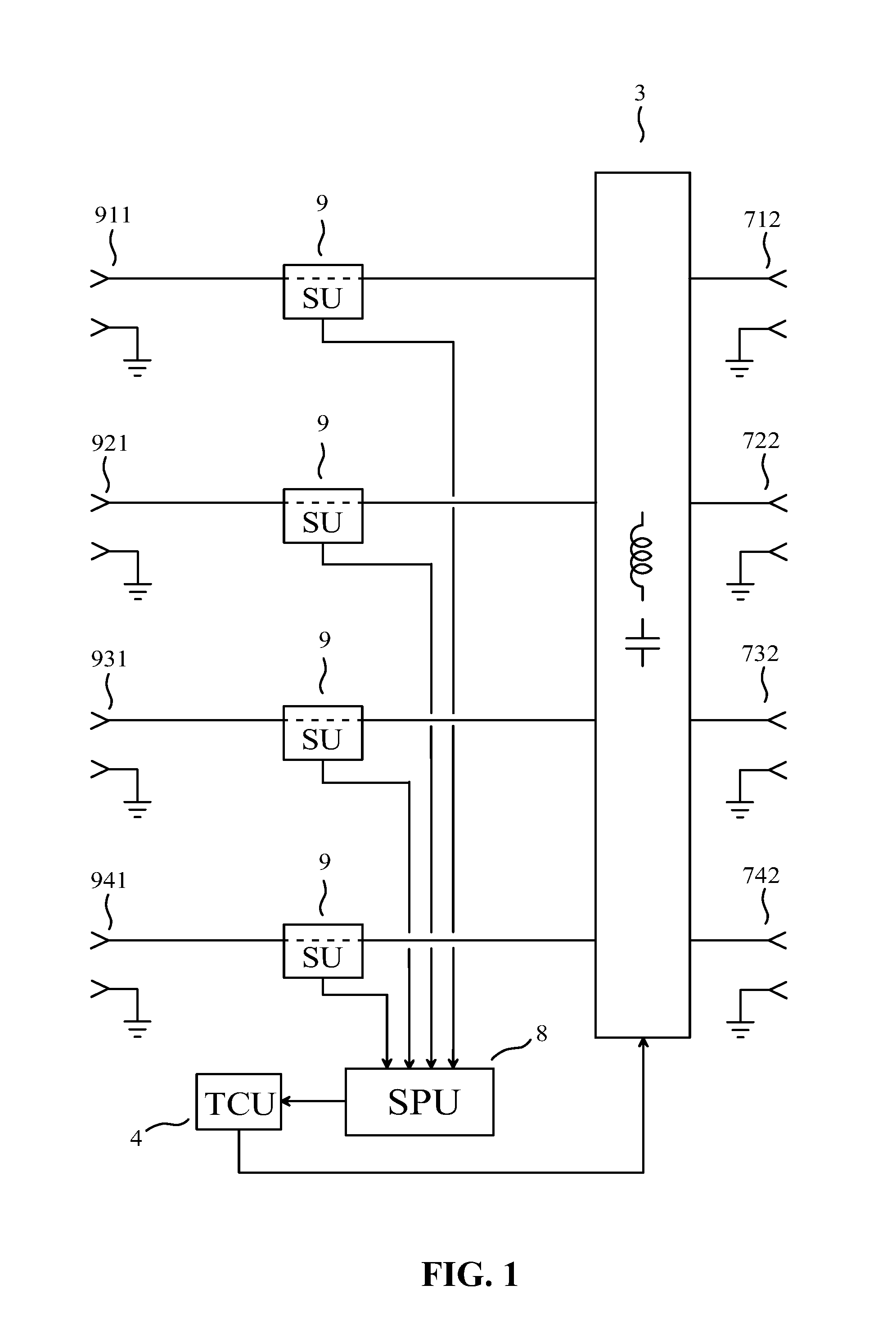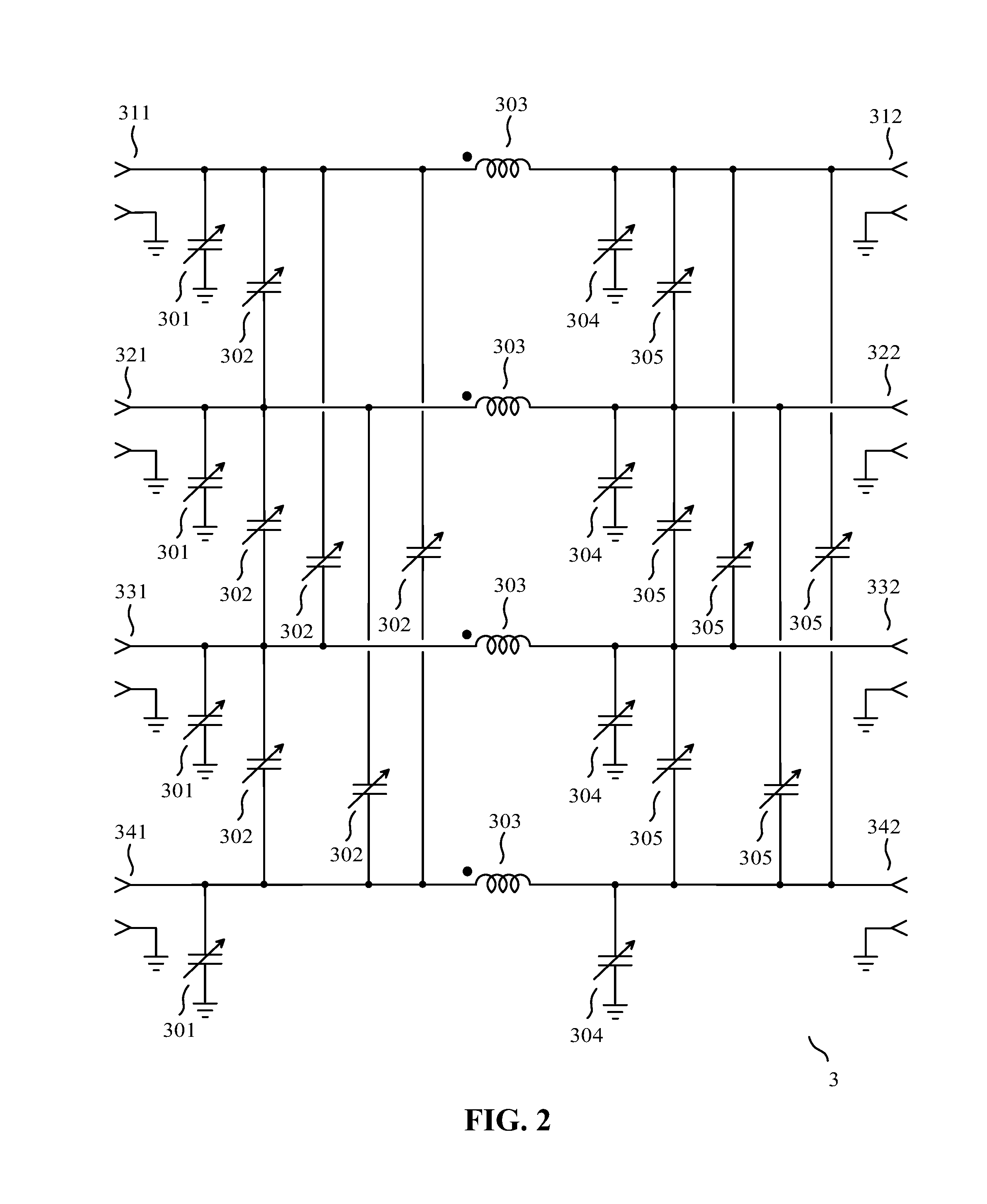Method for automatically adjusting a tuning unit, and automatic tuning system using this method
a technology of automatic adjustment and tuning unit, which is applied in the direction of multiple-port active networks, multiple-port networks, impedence matching networks, etc., can solve the problems of inability to automatically adjust the impedance matrix, single-input-output-output-output-output-output-output-output-output-output-output-output-output-output-output-output-output-output-output-ou
- Summary
- Abstract
- Description
- Claims
- Application Information
AI Technical Summary
Benefits of technology
Problems solved by technology
Method used
Image
Examples
first embodiment
[0053]As a first embodiment of a device of the invention, given by way of non-limiting example, we have represented in FIG. 1 the block diagram of an automatic tuning system having m=4 user ports (712) (722) (732) (742) and n=4 target ports (911) (921) (931) (941), the automatic tuning system allowing, at a given frequency greater than or equal to 30 MHz, a transfer of power from the user ports to the target ports, the automatic tuning system comprising:[0054]n sensing units (9), each of the sensing units delivering two “sensing unit output signals”, each of the sensing unit output signals being determined by one electrical variable;[0055]a signal processing unit (8), the signal processing unit estimating q real quantities depending on an impedance matrix seen by the target ports, where q is an integer greater than or equal to m, using the sensing unit output signals obtained for m excitations applied to the user ports, one and only one of the excitations being applied to each of th...
second embodiment
[0070]The second embodiment of a device of the invention, given by way of non-limiting example, also corresponds to the automatic tuning system having m=4 user ports and n=4 target ports shown in FIG. 1, and all explanations provided for the first embodiment are applicable to this second embodiment. Additionally, in this second embodiment, the m excitations are applied successively to the user ports, that is to say: the m excitations are applied one after another to the user ports. Thus, for instance, it is not possible that two or more of the excitations are applied simultaneously. Each of them excitations applied successively to the user ports may for instance comprise a sinusoidal signal at said given frequency, for instance a sinusoidal current at said given frequency applied to one and only one of the user ports, said one and only one of the user ports being a different user port for each of the m excitations. Each of the m excitations applied successively to the user ports may...
third embodiment
[0079]The third embodiment of a device of the invention, given by way of non-limiting example, also corresponds to the automatic tuning system having m=4 user ports and n=4 target ports shown in FIG. 1, and all explanations provided for the first embodiment are applicable to this third embodiment. Additionally, in this third embodiment, the m excitations are not applied successively to the user ports, that is to say: the m excitations are not applied one after another to the user ports. Thus, for instance, it is possible that two or more of the excitations are applied simultaneously to the user ports. Thus, for instance, it is possible that the m excitations are applied simultaneously to the user ports.
[0080]Moreover, each of the excitations is a bandpass signal. This type of signal is sometimes improperly referred to as “passband signal” or “narrow-band signal” (in French: “signal à bande étroite”). A bandpass signal is any real signal s(t), where t denotes the time, such that the ...
PUM
 Login to View More
Login to View More Abstract
Description
Claims
Application Information
 Login to View More
Login to View More - R&D
- Intellectual Property
- Life Sciences
- Materials
- Tech Scout
- Unparalleled Data Quality
- Higher Quality Content
- 60% Fewer Hallucinations
Browse by: Latest US Patents, China's latest patents, Technical Efficacy Thesaurus, Application Domain, Technology Topic, Popular Technical Reports.
© 2025 PatSnap. All rights reserved.Legal|Privacy policy|Modern Slavery Act Transparency Statement|Sitemap|About US| Contact US: help@patsnap.com



